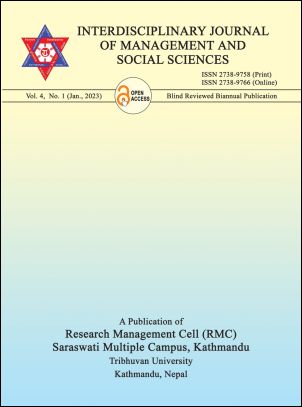Hamartia in Ghãtu Cultural Activity
DOI:
https://doi.org/10.3126/ijmss.v4i1.54104Keywords:
Ghãtu, self-immolation, tragic flaw, woman tragedyAbstract
Ghãtu has hamartia, a fatal flaw as it is about the deaths of the royal couple, the protagonists, who become the victims of unfortunate state or fortune hunter. Their early deaths moved the audiences that they have pity on the royal couple. It is the nature of audiences that they want the happy ending but there are very few people who have happy ending. Most people face the sufferings, a kind of tragedy. Only death is not a tragedy, facing different hardships is also a tragedy. Some sufferings can be much more torturous than the death. Death is one time death but suffering is hundred times death. The findings of the study show that the audiences entertain tragic story more than the happy story because tragic story is more didactic and philosophic as well as lesson oriented. And nobody can escape the ill fate. So, this paper employs Aristotle’s theory of pity and fear to analyze this Ghãtu site. In Ghãtu, the tragic flaw is not because of king’s arrogance or mistakes but because of his ill fate. His opponents suddenly attacked him. When he was slain on the battle field, this affected his queen and she immolated. This Ghãtu story is about how people become the victims of ill fates. The innocent people are victimized and punished. The audiences become aware of others mistakes as they have pity and fear. They do not want to fall into the vault of misfortunes although it is not avoidable. The study concerns on why people entertain tragic story.

